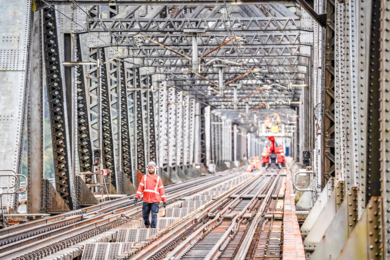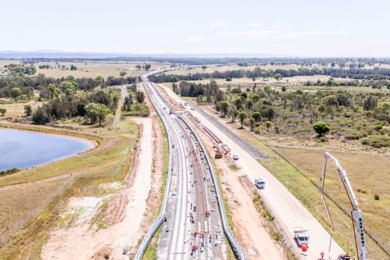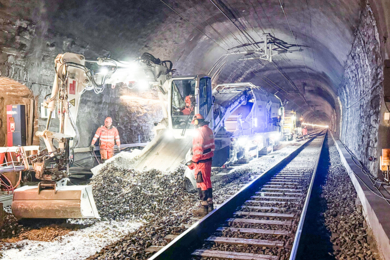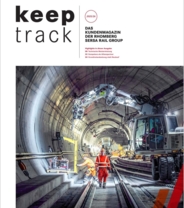Challenges and lessons learned in tunnel rehabilitation. From vault repairs to track renewal.
The refurbishment of the Wipkingen Tunnel presented the Rhomberg Sersa Rail Group team with a demanding task – tight timeframes, ongoing rail operations, and complex technical requirements. However, thanks to innovation, precise planning, and strong collaboration, the project was a success while also offering valuable insights for future work.
The Wipkingen Tunnel is a vital part of the railway infrastructure in the Zurich region. Since its original mining-style construction in 1856, it has undergone several rounds of refurbishment, most recently in the late 1980s, which included an extension with a covered section. Once again, it was time to carry out essential repairs which included restoring the existing masonry vault, renewing the track structure, and integrating a modern 132 kV cable system beneath the existing line. Rhomberg Sersa Rail Group was commissioned as the general contractor to carry out the works.
This challenging and fascinating project required full commitment both in planning and on-site execution. Various hurdles – from logistical bottlenecks to unforeseen geological conditions – had to be overcome. Dynamic and flexible working practices, combined with ongoing technical exchange on site, led to a successful outcome.
From the planning stage, it was clear that the biggest challenge would be working under live rail traffic. The tunnel had to remain operational throughout the works, which demanded precise construction management and close coordination with the SBB’s technical departments.
Thanks to innovative solutions, progress was ensured despite these constraints. Modern shotcrete methods were used to stabilise the vault structure sustainably. The installation of the fixed track system in the double-track tunnel was split into two independent stages. This setup allowed the RSRG Digital Rail Services team to implement targeted improvements. For instance, the in-house lifting system was refined and optimised.
The project also served to strengthen international collaboration within the company.
A key success factor was the close cooperation between all parties involved. Internally, the team collaborated seamlessly, while externally they worked closely with the client, planners, and safety experts to develop the best solutions for each challenge. Especially critical was the coordination with SBB specialists to minimise disruption to train services.
After nearly one and a half years of intensive work, the Wipkingen Tunnel was completed in December 2024. Now upgraded to the latest technical standards, it offers passengers a modern and reliable infrastructure.
For the Rhomberg Sersa Rail Group, the project was both educational and rewarding – a clear reminder that successful construction projects depend on precise planning, innovative techniques, and strong teamwork.
With the completion of this project, another chapter in the tunnel’s history comes to a close while laying the foundation for safe and efficient rail operations for decades to come.






